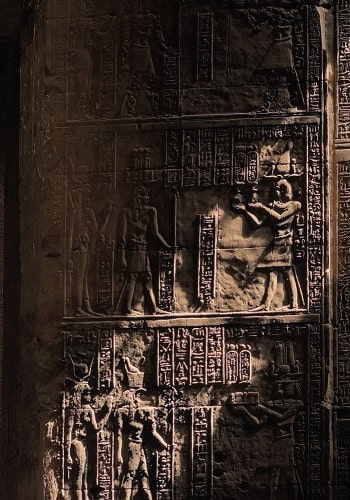Anaosho a Wizu
Anaosho a Wizu was the collective name for all the traditions and rituals practiced within the Yuiwian temples since the founding of the religion in the first century of the First Age.
Yuiwian magic tradition relied on an ever-shifting blend of divination, meditation and alchemy, both separately and together, as the study of these different areas advanced.
Tē Nazēha - Inner Flame
There was a concept in Yuiwia—originally adopted from the Old Faith—called tē nazēha. Colloquially it enjoyed a variety of nicknames, each a term describing the flame within all living beings which kept them warm and breathing.
There had been no concept of using this deeply internal and integral source of life and energy as an external force before the rise of Soyaewa and his siblings. After his appearance, however, many tablets were written by various scholars and sages who theorized and carefully documented all they could about this newfound technique.
The scholars quickly found out, through a number of experiments, that anyone attempting to transform their inner fire into so much as a spark outside of their body quickly burned out and passed away. For decades the wisest of Nīwulā Valley's minds studied the magic of Soyaewa, yet no record remained of how exactly the Sō-Thadi managed to do what he did without burning out like the rest.
Nīzebe - Divination
Before Yuiwia, it was called dreamwalking by the old nomadic people of Nīwulā Valley. After the establishment of the new religion, however, it came to be called nīzebe. Divination was the secretive art and practice of seeing into the future, as well as the past. The greatest of diviners, called nīna in Old Saehyuwe, could see far beyond their present place and time with such clarity it was difficult to separate from the real.
Most nīna were not all that powerful, however, and could only see or hear tiny slivers of the past or future, rarely being even able to tell which was which. This made their claims unreliable at best, though the situation was remedied somewhat by the introduction of the alchemical powder called the luonyuzu.
Kiyōbe - Alchemy
Whatever secrets Soyaewa had once uncovered to wield his terrible power, quickly returned to obscurity after his death. His family, eager to claim any right to his titles and legacy, had to find other ways to obtain that same strength and prove themselves as worthy.
Thus the study of nature, its rules and substances, began by an order of the second Sō-Thadi Tēhsō, son of Soyaewa. Scholars of Nimē a Nui dived into work, hoping that their moon goddess Nui would light their way through the nameless shadows of questions unanswered.
Tē a Lae - Liquid Fire
One of the earliest achievements of the new House of Alchemists was the formation of a thick, oily substance which, once lit, would burn steadily and for a lengthened period of time. It imitated, but could never truly replicate, the legendary flames of Soyaewa raging through a battlefield, and was extensively used by his descendants.
Tē a Lae could be used to set an item on fire. Most commonly it was used on weapons, as seeing a fire akin to the first Sō-Thadi brought a good boost to morale. However, the weapon would suffer severe damage from the heat and had to be replaced afterward.
Luonyuzu - Miasma
The miasma was developed to aid the diviners and dreamwalkers as they scoured through the past, present and future for guidance and answers. Luonyuzu was a dry, blackish powder which, once burned, created a heavy, smoky mist with a distinct tint of dark violet.
Most individuals, with and without previous ability in divination, experienced an increase in the lucidity of their dreams and the ease with which they could see into the past and future alike. Not all reacted to well to the smoke, however, and could experienced anything from seizures to coma and death once exposed to it.
Līhonu - Little Death
Only a small amount of the thick, oily black substance placed to dissolve on the tongue was plenty to create a strong sense of sweet bliss and euphoria. This was the Little Death, originally created to ease the suffering of the ill and the gravely wounded before their passing.
However, small circles within the House of Alchemists—the only people capable of making the substance—became known for consuming līhonu in the dark of night and out of the way, an action strictly prohibited and severly punished, but only if reported and caught red-handed. The exact regulations and punishment for violations shifted over time, but nothing managed to get fully rid of the practice.
History
Newly established during the first Sō-Thadi Soyaewa's conquest of Nīwulā Valley, Yuiwian faith began their studies of the arcane mysteries under the tutelage of the ruler's younger sister Sībyēmu.
Yuiwian tradition, as the entire religion itself, was founded on the vast amounts of knowledge, beliefs and practices of the ancestral peoples of Nīwulā Valley, and as such originally shared many of the core pillars with others who followed other, older faiths.
Oldest tablets found to include discussion of Yuiwian magic tended to focus on the concept of the innermost flame. Alchemy, however, became an interest late into the reign of the second Sō-Thadi Tēhsō, but it was not until the reign of his own son Tēhlebao that the study of substances began to bloom in earnest.



Comments